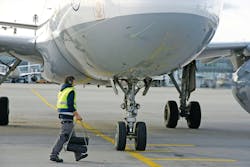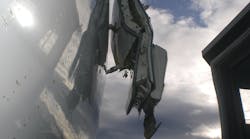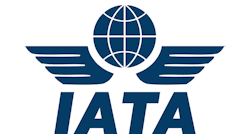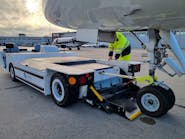What is the IATA Ground Operations Manual (IGOM)? How does it fit into other well-known programs, such as ISAGO and AHM? Here are the basics you need to know.
What is IGOM?
The IATA Ground Operations Manual is a standardized compilation of essential ground handling procedures recognized around the world to ensure a consistent level of service from ground service providers (GSPs).
With this international harmonization come some considerable benefits:
- Fewer injuries.
- Reduction in aircraft damages.
- Increased safety.
- Reduction in costs.
- Improved turnaround times.
But since IGOM is a relatively new program, it may help to review a couple of other IATA programs.
What is ISAGO?
IATA’s Safety Audit for Ground Operations is an on-site inspection of ground support provider stations around the world as well as at each ground service providers’ headquarters and/or administrative office.
Based on IOSA – the IATA Operational Safety Audit framework – ISAGO aims to implement a formal, systematic process to manage operational risk and safety, reducing accidents, incidents and injuries.
ISAGO is well along its way having officially started in 2008. Since then, it has conducted more than 460 audits and registered more than 100 GSPs operating at 120 airports.
Some of what all those audits uncovered is one key to understanding how IGOM got its start.
What did those audits uncover?
Big differences in services provided by GSPs, according to Joseph Suidan, head of ground operations IATA.
“There’s no question that one airline’s 737 should be treated differently than another airline’s 737,” he said during a webinar broadcast Oct. 10, 2012.
And if ISAGO is going to be effective, there must be one defined procedure that can be audited around the world.
“From the start,” Suidan said, “ISAGO and IGOM were designed to be an integrated approach to solving the problem of inconsistent ground handling. Having defined procedures that can be audited in the IGOM will make ISAGO even more credible and valuable.”
Here’s where one more acronym will help understand what IGOM is.
What is AHM?
The IATA Airport Handling Manual or AHM is the only industry-approved standard for safe and efficient airport operations. It is a proven source for the latest ground handling related polices and safety guidelines. It also includes the only industry-recognized contract template, the Standard Ground Handling Agreement or SGHA.
What does that mean for IGOM?
IGOM is based on the AHM with one offering strategy and other other offering tactics.
The AHM contains policies, standards and safety guidelines that tell managers what to do. IGOM’s procedures and instructions tell frontline ramp personnel how to do it.
“The relevant parts of AHM are also incorporated into the basic structure of ISAGO and IGOM,” Suidan explained, “spreading the base of these documents.”
In turn, ISAGO then verifies the various policies, guidelines and procedures. Finally, IATA’s Ground Damage Database or GDDB provides analysis and input to AHM and IGOM for risk assessment and standards to mitigate risk.
“IGOM is the key to improving airside activity,” Suidan added.
Instead of searching through many documents, IGOM condenses and compiles the essentials for safe and successful ramp operations into one document.
“In this way,” Suidan explained, “it forms the first, practical ‘visible’ link between all of these important documents.”
How was IGOM developed?
An IGOM task force was established in 2010 and included a cross-section of the aviation industry, including airlines and aviation manufacturers and six GSPs – ASE Egypt; Fraport; Swissport; Jardine Airport Services; Menzies; and Servisair.
The task force met seven times since its inception during which the members established best practices and voted on which to accept for the first edition of IGOM.
“You wouldn’t believe how many ways there are to chock an A320,” said Captain Peter Laasner, senior manager, ground operations for Swiss European Air Lines, who served as the IGOM task force chairman. Some GSPs were putting chock in front of and behind all the wheels of aircraft just to be sure they were compiling with differents sets of demands.
“What we did was identify the best way to chock all narrow-body aircraft, including the A320,” Laasner said.
During the webinar Laasner mentioned two ways task force member KLM expects to gain from standardization:
- The airline expects to save $274,00 annually in administrative costs related to investigating the causes of accidents and injuries.
- Since streamlined procedures means streamlined training, the airline expects to reduce training a half-day per employee, equaling about $167 per employee per year.
For his part, Lassner said his airline expects to save $350,000 a year on flights into the UK due to changes in standardized arrival procedures that convinced the country’s aviation regulators to allow ground power to be connected to aircraft before the engines are switched off.
“Standardization will allow the airlines to concentrate on doing what passengers will appreciate,” he added.
Where do I get a copy of IGOM?
The group’s goal was to have six chapters of the IGOM ready for publication by the end of 2011. The first edition of the IGOM was released in April 2012 and sent to all purchasers of the latest edition of the AHM as a supplement.
For more information, go to www.iata.org/publications.
So where does IGOM go from here?
The task force will continue to meet twice a year to consider proposed changes to the contents of IGOM. Changes to the second edition are already expected due to gap analysis between IGOM and AHM.
IATA plans to partner with worldwide regulators, including the FAA to start getting IGOM adopted. The European Civil Aviation Conference has already given its endorsement to IGOM and ISAGO.
Over the next two years, IATA plans to address any overlaps and/or differences between the IGOM and AHM. By 2015, IGOM is ready for implementation.
IATA has already begun promoting the IGOM to airlines and wants feedback to further update the manual.
Training programs are expected this year and next. And by 2016, the hope is that the IGOM will be embedded within the ISAGO as the industry standard.







